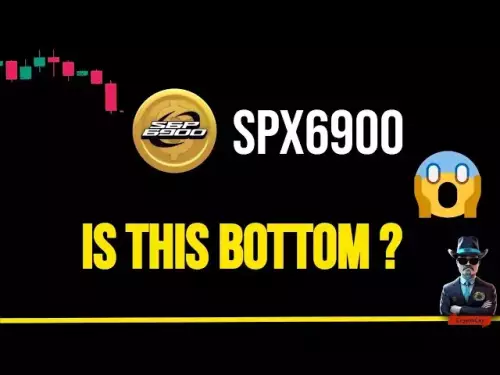 |
|
 |
|
 |
|
 |
|
 |
|
 |
|
 |
|
 |
|
 |
|
 |
|
 |
|
 |
|
 |
|
 |
|
 |
|
Cryptocurrency News Articles
Ethereum L2 Hype: Faster, Cheaper, and Ready to Rumble?
Aug 22, 2025 at 05:59 pm
Ethereum L2s are sparking major hype, promising faster and cheaper transactions. But is it all just talk, or is there real substance behind the buzz?

Ethereum L2 Hype: Faster, Cheaper, and Ready to Rumble?
Ethereum's Layer 2 scaling solutions are grabbing headlines, promising a smoother, cheaper ride. But are they all created equal? Let's dive in.
The Allure of Layer 2: Why the Hype?
The promise of Ethereum Layer 2 (L2) solutions is simple: faster transactions and lower fees. Projects like Layer Brett are capturing attention by positioning themselves as faster than Solana and cheaper than Cardano. The buzz is real, fueled by the desire for a more usable and affordable Ethereum ecosystem.
Layer Brett: The Meme Coin Challenger
Layer Brett is one project that's been making waves, combining the virality of meme tokens with the performance of L2 scaling. Unlike some meme coins that lack real utility, Layer Brett aims to provide genuine blockchain scaling with features like staking, NFT integration, and DAO governance.
Its presale, priced at just $0.0047 per LBRETT, is generating FOMO among meme coin enthusiasts and DeFi investors alike, with analysts projecting potential gains of 100x or more.
The Optimium Debate: Trust vs. Scalability
Not all L2s are built the same. A key distinction is between traditional L2s and Optimiums. Traditional L2s post transaction data directly to Ethereum, ensuring that the network can correct errors even if the L2 operator is malicious. Optimiums, on the other hand, outsource data availability to external networks, reducing on-chain costs but introducing new trust assumptions.
While Optimiums like Maple (SYRUP) offer lower fees and faster transactions, they rely on the trustworthiness of external networks like EigenDA. Critics argue that this introduces a "black hole" risk, where users could lose assets without recourse if the external network fails.
Navigating the L2 Landscape
For investors, the key is to weigh the scalability benefits of Optimiums against their trust assumptions. Risk-tolerant investors might consider early-stage Optimiums with strong technical teams, while conservative investors may prefer traditional L2s or Ethereum-native assets.
The Bottom Line
Ethereum L2s are undoubtedly sparking hype, promising faster and cheaper transactions. While projects like Layer Brett are capturing attention with their meme-inspired approach, the underlying technology varies, with Optimiums introducing new trust considerations. As with any investment, it's crucial to do your research and understand the risks involved.
So, is the L2 hype justified? It seems like Ethereum Layer 2 is ready to redefine meme culture with real blockchain power, and Layer Brett is leading the charge. Only time will tell, but one thing's for sure: the race for Ethereum scaling is heating up, and it's going to be an interesting ride!
Disclaimer:info@kdj.com
The information provided is not trading advice. kdj.com does not assume any responsibility for any investments made based on the information provided in this article. Cryptocurrencies are highly volatile and it is highly recommended that you invest with caution after thorough research!
If you believe that the content used on this website infringes your copyright, please contact us immediately (info@kdj.com) and we will delete it promptly.





























































